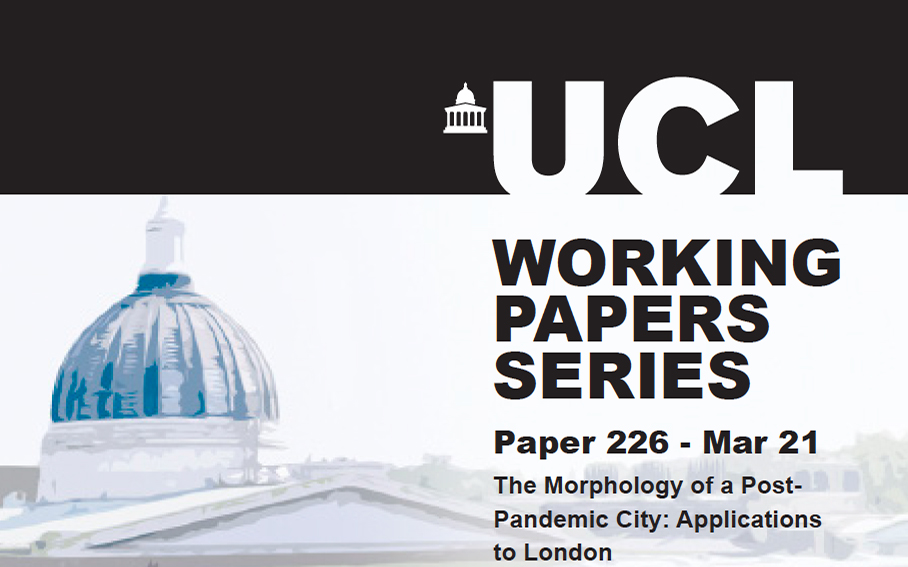CASA Working Paper 226: The Morphology of a Post- Pandemic City | Applications to London
The Morphology of a Post-Pandemic City | Applications to London

24 March 2021
Abstract
Here we extend a hypothetical model used to explore the push and pull forces based on location and interaction in the post-pandemic city to a more realistic context, that of London and its region (Batty, 2021). The abstract model reveals that the mono-centricity and symmetry of the hypothetical city is hard to break until we introduce functions of travel impedance between locations based on a trade-off between the increasing and decreasing attractions of living at a distance from home and/or work. In this way we can reverse the centripetal forces on the centre and in the extreme, wipe these out almost completely with centrifugal forces. We transfer this analysis to the London metropolitan region, represented by some 1767 small zones where employment is much more concentrated than population. We introduce different levels of lockdown into London by exploring what happens when different proportions of workers work from home and we then slowly relax these restrictions letting the model predict new distributions of employment and population due to a succession of changes in locational attractions due to the relocation of these activities. We do this progressively until everybody is working in their traditional workplace and this indicates that activities are more likely to converge towards the central city than the suburbs. We develop seven different scenarios based on different blends of travel behaviour and these results bear out our experiments with the hypothetical city. We introduce changes in the impact of distance slowly increasing the attraction of places as the lockdown is relaxed and this blows the concentration of activities to the city’s edges. We then do the reverse which concentrates the city in its traditional core. There are many issues still to be resolved in using this somewhat more real model of the city than the completely abstract one of the previous paper, but as more data pertaining to the lockdown is gathered and made available, we will continue to improve the model and its analysis.
Note to the Reader: Working Paper 225 ‘The Socially-Distanced City: Speculation Through Simulation’, outlines the hypothetical model applied in this paper to the London metropolitan region and readers who need to note this can find the paper here.
Author/s: Michael Batty
Download CASA Working Paper 226 (file size 2.3 MB, file format PDF)
 Close
Close

